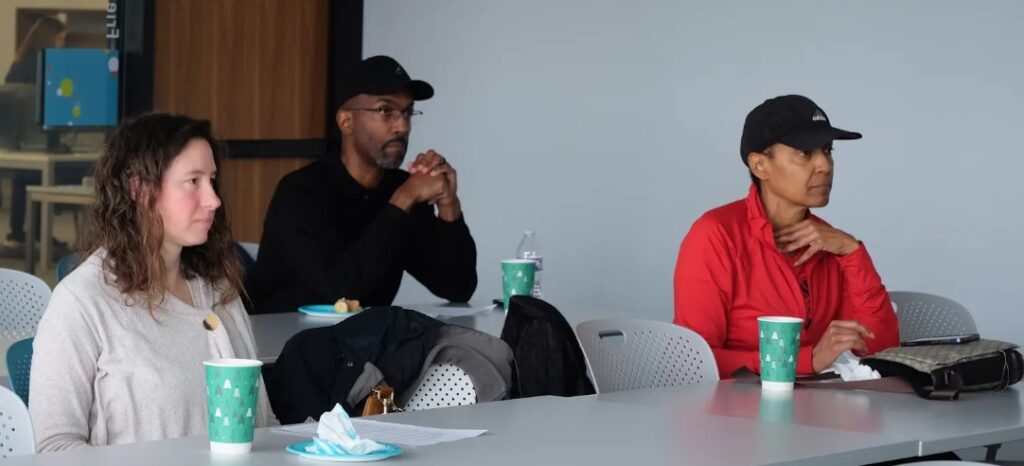Written by Sheri Collins and L. M. Land
Photos by L. M. Land
Where do you get your news? Can you spot misinformation or recognize bias? Where do you find uplifting stories that reflect the truth about who we are? Have you ever shared a news story you thought was accurate and later found it to be false?
The Courier’s Sheri Collins (formerly Sheri Stuart) is highly qualified to answer these questions, as her career has been spent in TV newsrooms, in newspaper and magazine reporting and in public relations.
Collins held a Media Literacy Workshop on November 8, 2025 to help us all work through the confusing world of news. She explained that the power of media can shape how we see ourselves and the world. Messages are constructed to influence our perceptions.

One in five Americans are currently getting their news on TikTok. Mostly the 18-29 year olds watch there, but all ages are watching. Anyone can post whatever view they want without fact checking and with a bias.
To further confuse us, AI can make anything look real when it is not.
Collins defined the types of questionable information.
- Misinformation is false, but not created/shared with bad intent. In this case, many newspapers will put a correction in their papers following the printed error.
- Disinformation is created with the intent to mislead, harm or manipulate.
- Malinformation is based in fact, but used out of context to mislead or harm.
Ask yourself who benefits from how a news story is told. An actor, a police officer, an advertiser or a politician may want to sway your opinions.

Understanding media bias and ownership is one way to look for these biases:
- Who owns the media influences is who chooses the stories that are told. As an example, The Flint Courier News is a Black-owned, Christian paper, reporting local news in Flint, Michigan. Our focus is on local stories, reflecting news relevant primarily to Flint’s minorities.
- Bias is natural, but seeing and recognizing it helps us to think critically.
- Unrecognized bias is a problem because it shapes our beliefs without our knowledge.
There are five types of media bias:
- Selection Bias is choosing which story to cover, and which to ignore.
- Framing Bias is deciding HOW to tell a story. For example: Calling a group of people protesters vs. rioters. The first word implies a peaceful event, calling them rioters makes it sound like there was violence.
- Visual Bias is choosing photos or videos that create a certain impression. For example, using a photo of a rally where only a few protesters are standing together vs. showing the large crowd that was there.
- Word Choice Bias is using language that carries emotional weight. For example, using ‘illegal alien’ vs. ‘undocumented immigrant’.
- Confirmation Bias is the tendency to believe information that supports what you already think. This is when you share a post, for example, that agrees with your views without checking the facts.

To spot misinformation, look for red flags that are emotionally manipulative, has missing sources or is using outdated context.
Use non-partisan fact-checking tools. Some good ones are:
Go forward with these tools and understandings as you navigate this unusual political climate.


